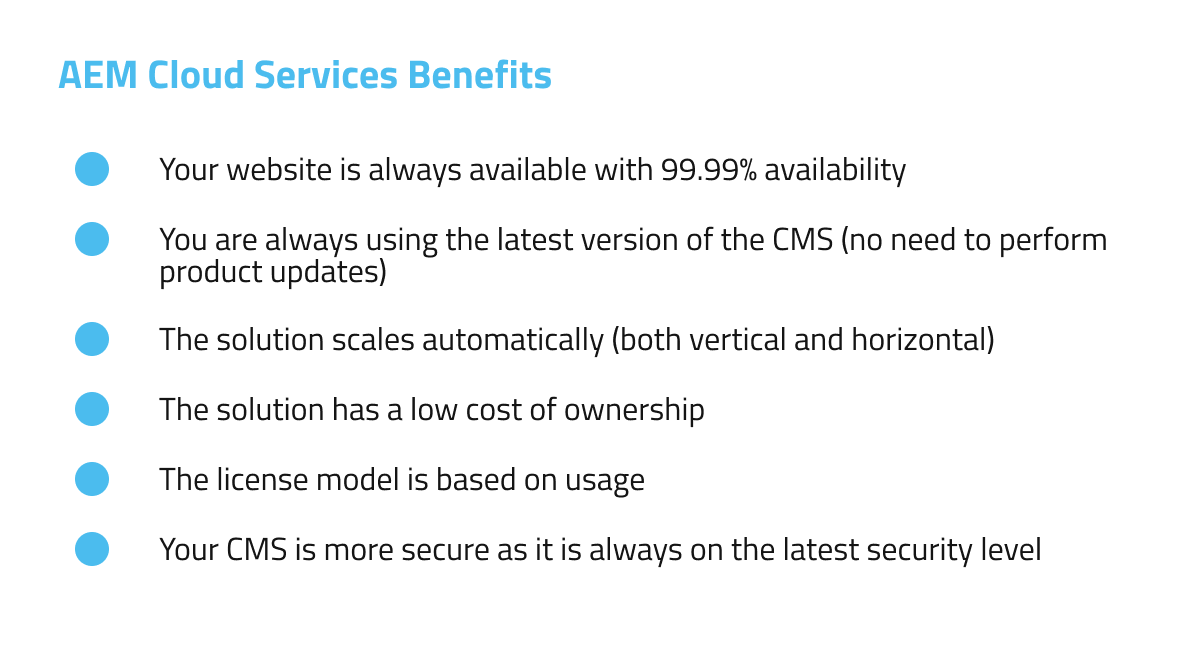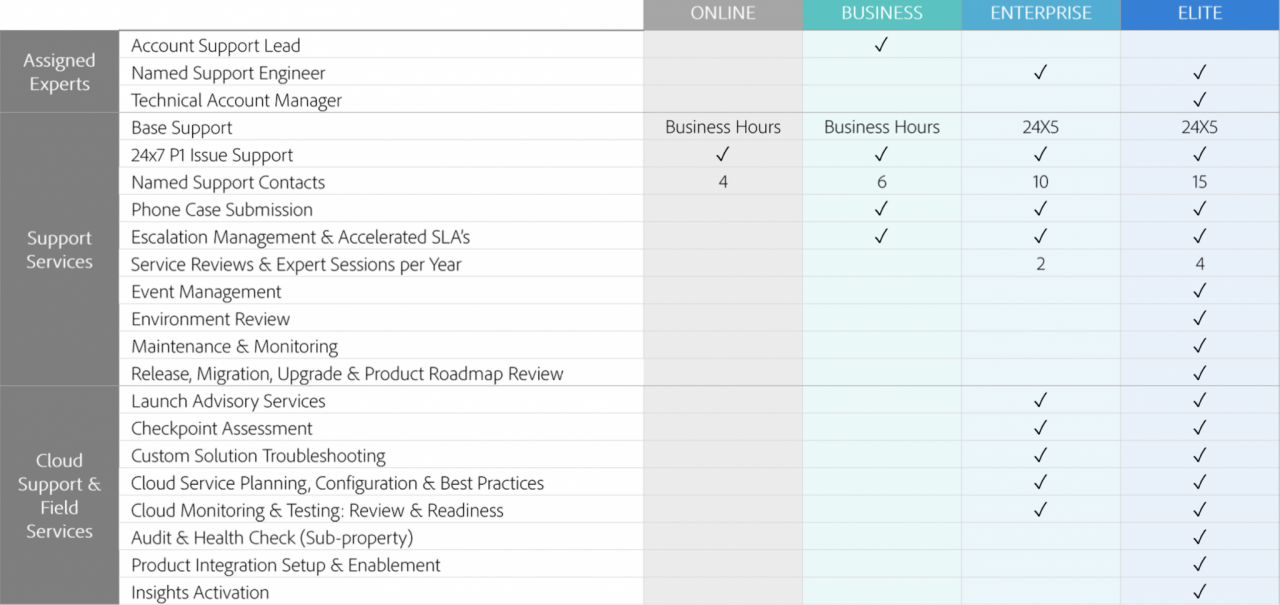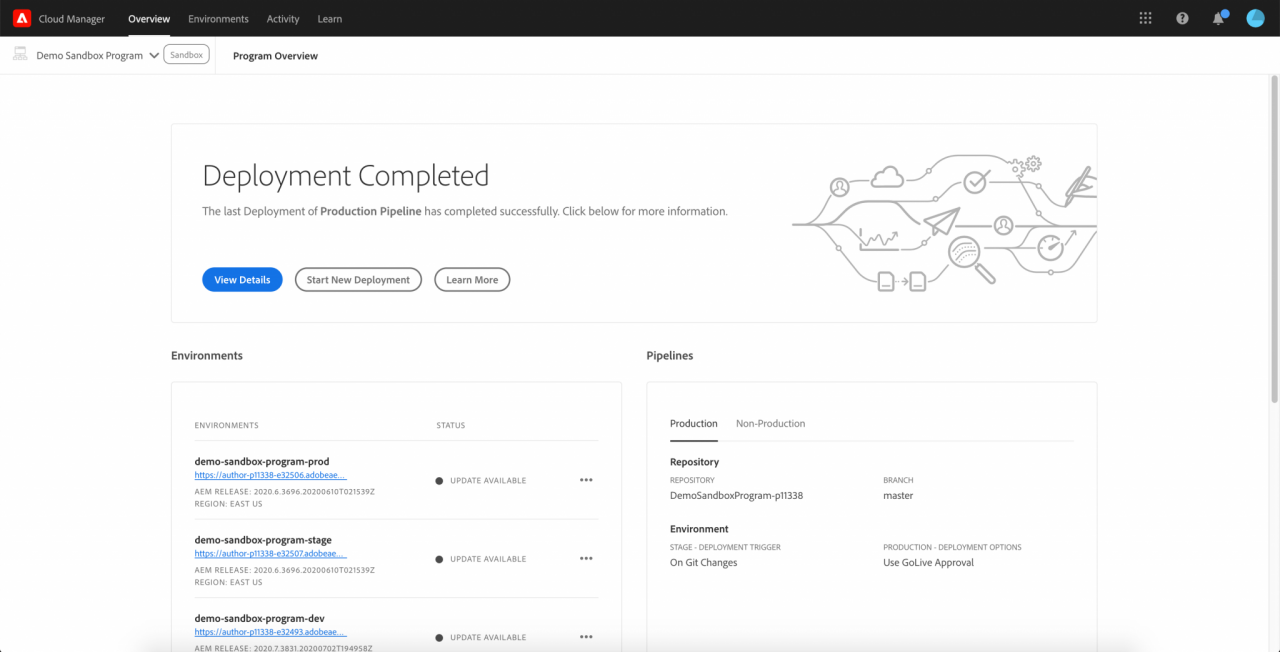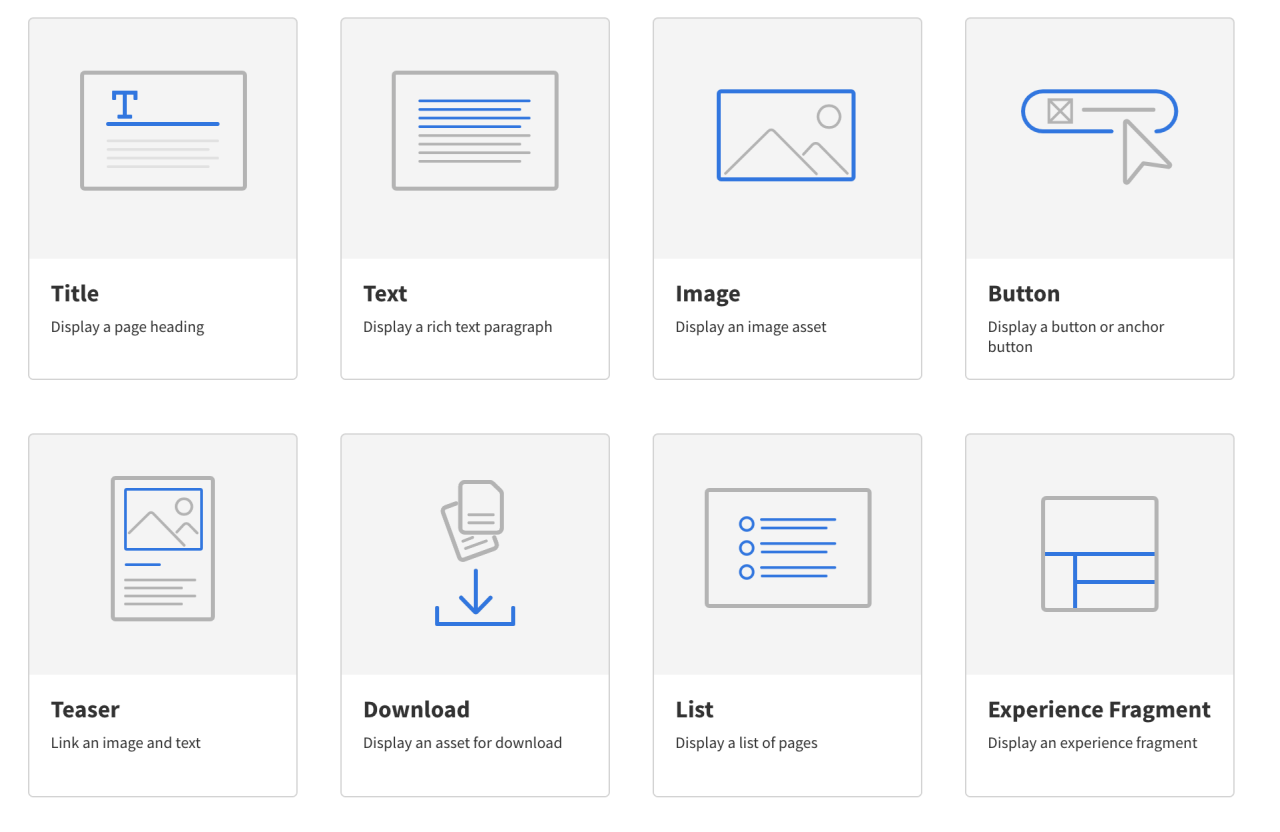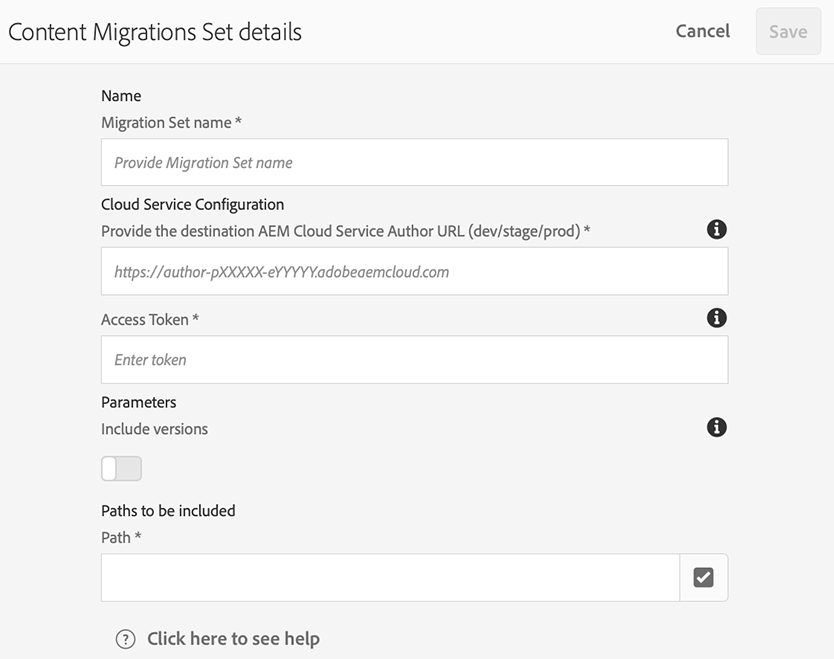Adobe Experience Manager as a Cloud Service, what is it?
You might already be familiar with the CMS of Adobe – AEM, and you are wondering what this brand new cloud-native CMS is.
AEM as a Cloud Service is the most significant change that has happened to the AEM ecosystem in the last ten years. It’s the next evolution of the AEM On-Premise and AEM Managed Services versions.
We have collected the most frequently asked questions about Adobe Experience Manager as a Cloud Service.
PS: If you have any additional questions, just let us know.
Table of contents
1. What is Adobe Experience Manager as a Cloud Service?
2. What are the acronyms of Adobe Experience Manager as a Cloud Service?
3. What are the main benefits of Adobe Experience Manager as a Cloud Service?
4. Is AEM as a Cloud Service intended for complex websites?
6. How does the support from Adobe on AEM as Cloud Service work?
7. Will the on-premise version of AEM still be supported?
8. What is the VASS model to react to issues that arise due to Adobe breaking things in the cloud?
10. What is the pricing model of AEM Cloud Service?
11. What cloud provider supports AEM as a Cloud Service?
12. Does Adobe have a data center in Switzerland?
13. Who is managing the updates of AEM as a Cloud Service?
15. Is Cloud Manager the only option to deploy to the cloud?
16. What’s the best approach to start using Adobe Experience Manager as a Cloud Service?
17. What is the Adobe Digital Foundation Blueprint?
18. What are the AEM Core Components?
19. What are the limitations of the Core Components and should I use them to build my website?
20. How do we develop and deploy new features for AEM as a Cloud Service?
21. How do we connect third-party services or databases to AEM as a Cloud Service backend?
22. How do we display data from a backend system via JS in an AEM as a Cloud Service component?
23. Can we use our CDN with AEM as a Cloud Service?
24. Is it possible to move AEM as a Cloud Service to a cloud provider of my choice?
25. What are the tools to help with the migration?
26. Should my company move to AEM as a Cloud Service?
What is Adobe Experience Manager as a Cloud Service?
Adobe Experience Manager as a Cloud Service is a new generation software-as-a-service for experience management by Adobe.
It’s based on the leading solution Adobe Experience Manager (AEM) and offers outstanding content management (CMS) capabilities and digital asset management (DAM) for marketing and communication teams.
The solution has been entirely designed for the cloud and is scalable, secure, always available and up-to-date.


 Facebook
Facebook
 X
X
 Linkedin
Linkedin
